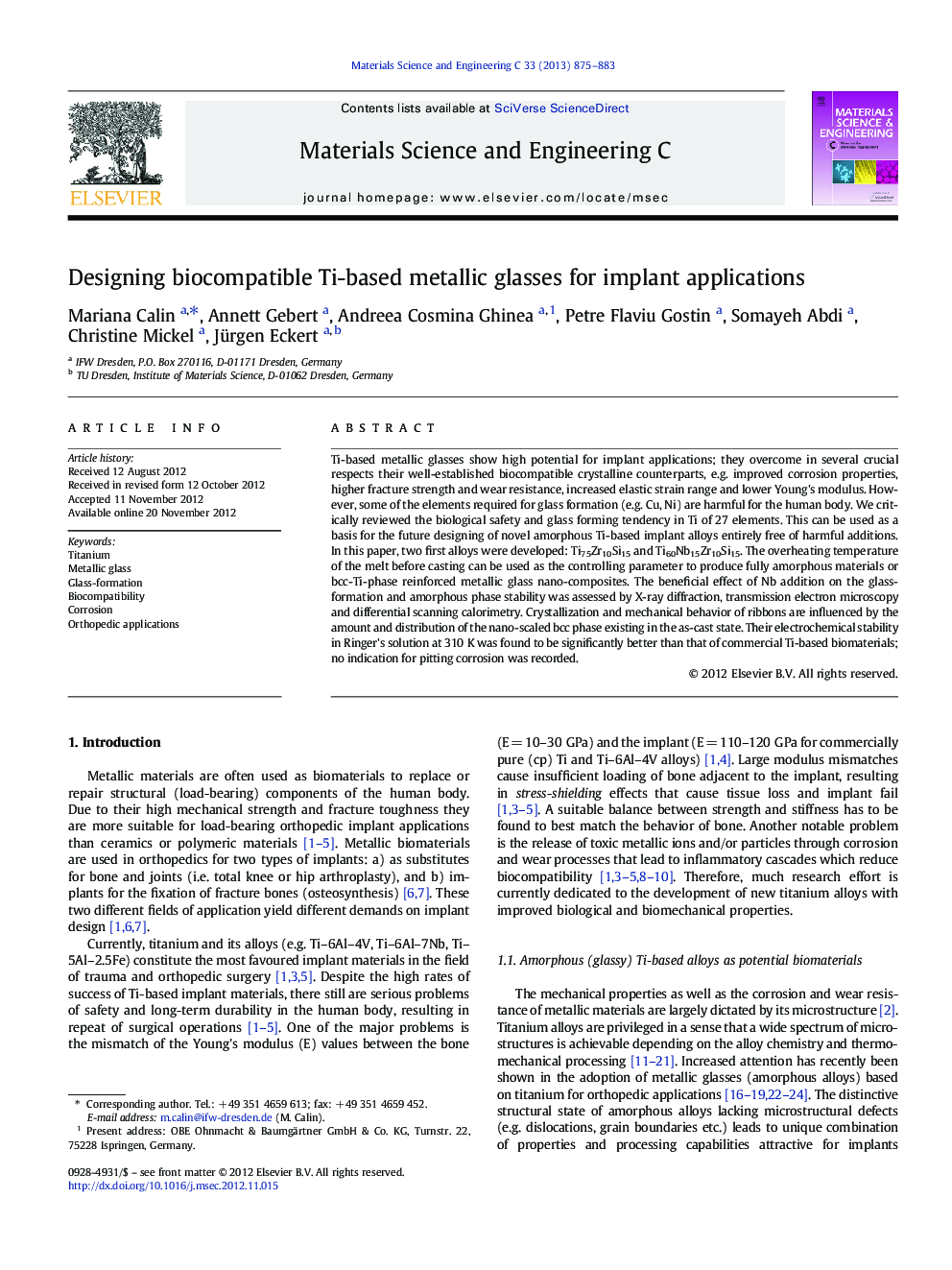| Article ID | Journal | Published Year | Pages | File Type |
|---|---|---|---|---|
| 1428895 | Materials Science and Engineering: C | 2013 | 9 Pages |
Ti-based metallic glasses show high potential for implant applications; they overcome in several crucial respects their well-established biocompatible crystalline counterparts, e.g. improved corrosion properties, higher fracture strength and wear resistance, increased elastic strain range and lower Young's modulus. However, some of the elements required for glass formation (e.g. Cu, Ni) are harmful for the human body. We critically reviewed the biological safety and glass forming tendency in Ti of 27 elements. This can be used as a basis for the future designing of novel amorphous Ti-based implant alloys entirely free of harmful additions. In this paper, two first alloys were developed: Ti75Zr10Si15 and Ti60Nb15Zr10Si15. The overheating temperature of the melt before casting can be used as the controlling parameter to produce fully amorphous materials or bcc-Ti-phase reinforced metallic glass nano-composites. The beneficial effect of Nb addition on the glass-formation and amorphous phase stability was assessed by X-ray diffraction, transmission electron microscopy and differential scanning calorimetry. Crystallization and mechanical behavior of ribbons are influenced by the amount and distribution of the nano-scaled bcc phase existing in the as-cast state. Their electrochemical stability in Ringer's solution at 310 K was found to be significantly better than that of commercial Ti-based biomaterials; no indication for pitting corrosion was recorded.
Graphical abstractFigure optionsDownload full-size imageDownload as PowerPoint slideHighlights► Link between biocompatibility and glass-forming ability of alloying additions in Ti ► Selection of Ti–Zr–Si and Ti–Zr–Nb–Si glass-forming alloys ► Two novel glassy alloys were developed: Ti75Zr10Si15 and Ti60Nb15Zr10Si15. ► Glass-formation, thermal stability, corrosion and mechanical behavior were studied. ► Assessing the suitability for orthopedic applications.
